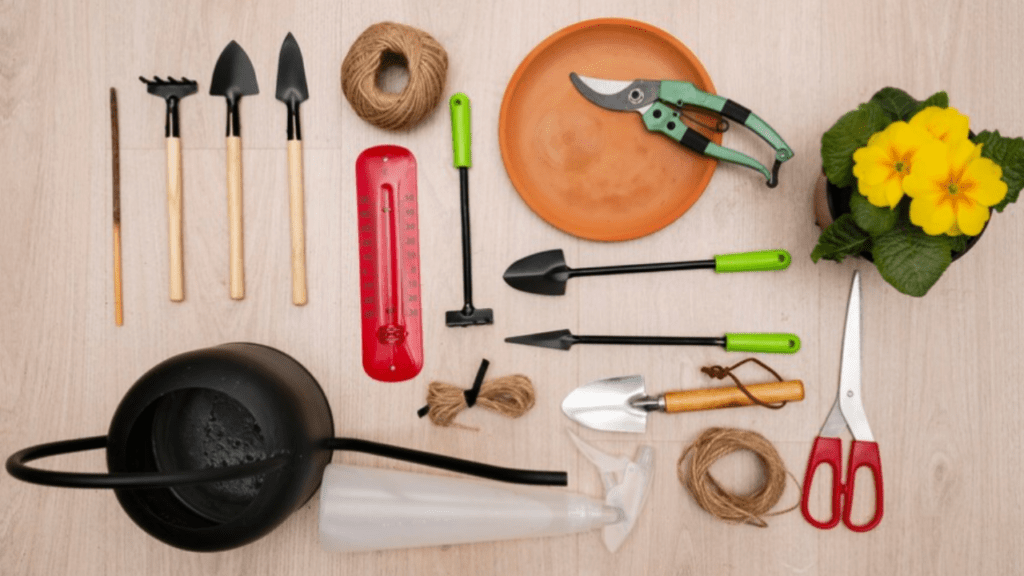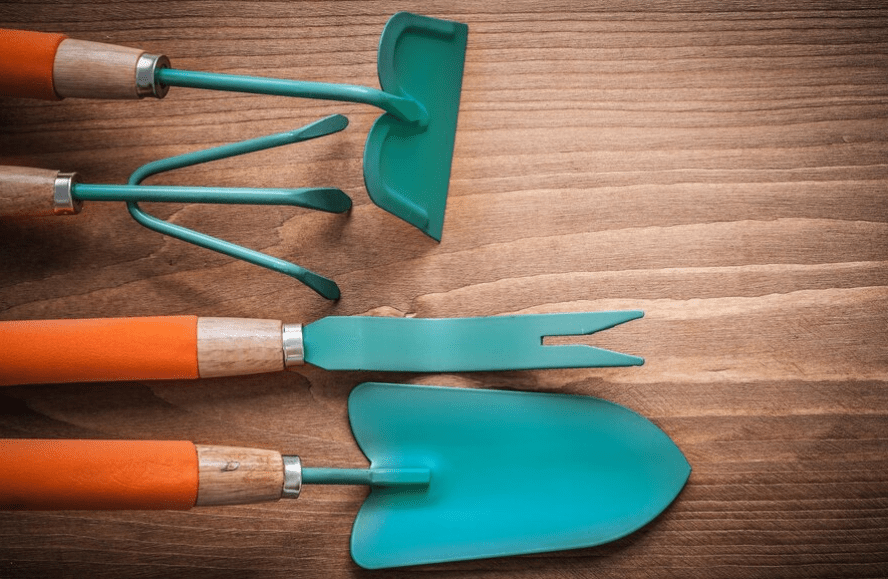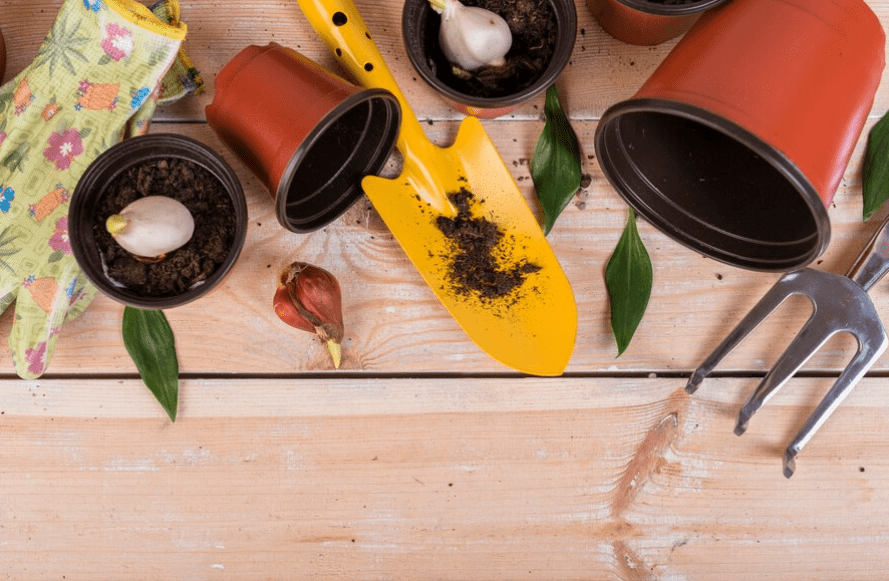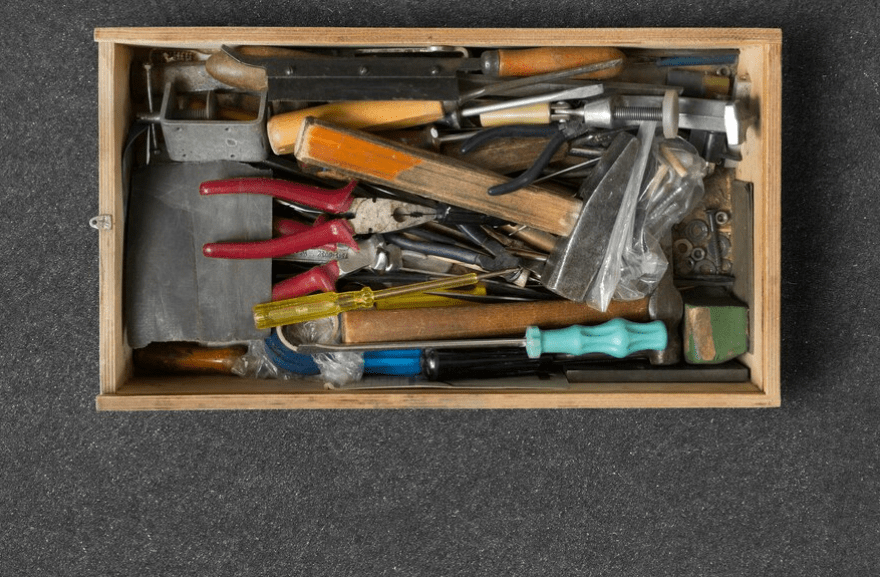
Unlocking Garden Potential: The Ultimate Guide to Long Handled Tools for Gardening Success
In the world of gardening, the right tools can make all the difference between a flourishing garden and a struggling one. Long handled tools are among the most essential assets for any gardener, offering versatility, reach, and efficiency in a variety of tasks. From digging to pruning to cultivating, these tools play a vital role in maintaining the health and beauty of outdoor spaces. In this comprehensive guide, we’ll explore the importance of long handled tools for gardening and delve into their various types and applications, ensuring you have the knowledge and skills to optimize your gardening experience.
Table of Contents
ToggleUnderstanding Long Handled Tools

is essential for any gardener looking to maximize their potential in the garden. These tools offer extended reach and leverage, making tasks such as digging, pruning, and cultivating much easier and more efficient. By using long handled tools, gardeners can minimize strain on their bodies and make quick work of various gardening tasks.
There are many different types of long handled tools, each designed for specific purposes. Shovels and spades are essential for digging and moving soil, while hoes and cultivators are ideal for weeding and loosening soil. Pruners and loppers with long handles are perfect for reaching high branches and pruning trees and shrubs. By understanding the different types of long handled tools and their applications, gardeners can choose the right tool for the job and achieve the best results in their garden.
In addition to their practical applications, long handled tools also offer better balance and stability for gardeners. With the extended reach that these tools provide, gardeners can maintain better posture and reduce the risk of injury while working in the garden. This is especially important for older gardeners or those with mobility issues, as long handled tools can make gardening more accessible and enjoyable.
Overall, understanding long handled tools is crucial for any gardener looking to optimize their gardening experience. By choosing the right tools and using them effectively, gardeners can unlock the full potential of their garden and achieve greater success in their outdoor spaces.
A. Definition and Importance of Long Handled Tools for Gardening
Long handled tools for gardening are essential for reaching high branches and pruning trees and shrubs. These tools provide extended reach, allowing gardeners to maintain better posture and reduce the risk of injury while working in the garden. They also offer better balance and stability, making gardening more accessible and enjoyable, especially for older gardeners or those with mobility issues. By understanding the different types of long handled tools and their applications, gardeners can choose the right tool for the job and achieve the best results in their garden. Overall, understanding long handled tools is crucial for any gardener looking to optimize their gardening experience and achieve greater success in their outdoor spaces.
1. Definition of long handled tools and their significance in garden maintenance.
Long handled tools for gardening are essential for reaching high branches and pruning trees and shrubs. These tools provide extended reach, allowing gardeners to maintain better posture and reduce the risk of injury while working in the garden. They also offer better balance and stability, making gardening more accessible and enjoyable, especially for older gardeners or those with mobility issues. By understanding the different types of long handled tools and their applications, gardeners can choose the right tool for the job and achieve the best results in their garden. Overall, understanding long handled tools is crucial for any gardener looking to optimize their gardening experience and achieve greater success in their outdoor spaces.
2. Explanation of how these tools help minimize strain and reach difficult areas.
Long handled tools for gardening are crucial for reaching difficult areas and minimizing strain on the body. These tools allow gardeners to reach high branches, prune trees and shrubs, and perform other tasks without having to stretch or strain their bodies. This helps minimize the risk of injury and allows for more comfortable and efficient gardening. Additionally, long handled tools provide extended reach, allowing gardeners to work from a more stable position and maintain better posture while working in the garden. This is especially beneficial for older gardeners or those with mobility issues, as it allows them to continue enjoying their passion for gardening without putting undue strain on their bodies. Overall, understanding the benefits of long handled tools and how to use them effectively is essential for any gardener looking to maintain their outdoor spaces with ease and success.
Digging Tools: Unearthing the Essentials
A. Spades: Versatile and Sturdy
Spades are an essential gardening tool that is both versatile and sturdy. They are designed to dig and move soil, making them perfect for a variety of gardening tasks such as planting, digging trenches, and edging flowerbeds. The sturdy construction of spades allows them to withstand the pressure of digging into tough, compacted soil without bending or breaking. Their versatility makes them suitable for a wide range of gardening tasks, making them an indispensable tool for any gardener. Whether you are a beginner or a seasoned gardener, having a sturdy and versatile spade in your gardening toolkit is essential for maintaining a beautiful outdoor space.
1. Explanation of different types of spades and their uses.
There are several different types of spades, each with its own specific uses. The most common type is the digging spade, which has a flat, rectangular blade that is designed for digging and moving soil. This type of spade is perfect for planting, digging trenches, and edging flowerbeds. Another type is the border spade, which is smaller and lighter than a digging spade and is perfect for working in confined spaces or for more delicate tasks such as edging and transplanting. There are also specialized spades, such as the trenching spade, which has a narrow blade that is ideal for digging narrow, deep trenches. Understanding the different types of spades and their uses is essential for any gardener looking to maintain their outdoor spaces with ease and success.
2. Tips for proper technique and efficient digging with a spade.
When using a spade for digging, it’s important to use the proper technique to ensure efficiency and minimize the risk of injury. Start by selecting the right spade for the job. A digging spade with a flat, rectangular blade is ideal for general digging and moving soil, while a border spade, which is smaller and lighter, is perfect for more delicate tasks in confined spaces.
Once you have the right spade, use your body weight to drive the spade into the ground, rather than relying solely on arm strength. This will make the digging process easier and more efficient. Additionally, be mindful of your posture and position your body so that you can use your leg muscles to help with the digging motion.
When digging, it’s important to maintain a straight back and avoid twisting or bending in awkward positions to prevent strain on your muscles and back. Also, always keep the blade of the spade sharp to make digging easier and more efficient.
By following these tips and using the proper technique, you can make the most of your spade and ensure that your digging tasks are completed with ease and efficiency.
B. Shovels: Moving Soil with Ease
Digging and moving soil can be a tough task, but with the right tools and technique, it can be made much easier. When it comes to shovels, using a digging spade with a flat, rectangular blade is ideal for general digging and soil movement, while a border spade is perfect for more delicate tasks in confined spaces. It’s important to use your body weight to drive the spade into the ground, rather than relying solely on arm strength, as this will make the digging process easier and more efficient. Additionally, pay attention to your posture and position your body in a way that allows you to use your leg muscles to help with the digging motion. Maintaining a straight back and avoiding twisting or bending in awkward positions is important to prevent strain on your muscles and back. Keeping the blade sharp is also crucial for easier and more efficient digging. By following these tips and using the proper technique, you can make the most of your shovel and ensure that your digging tasks are completed with ease and efficiency.
1. Overview of various types of shovels and their applications.
Shovels come in various types, each with its own unique applications. A digging spade with a flat, rectangular blade is ideal for general digging and soil movement, while a border spade is perfect for more delicate tasks in confined spaces. There are also shovels designed specifically for gardening, such as a transplanting trowel for planting small flowers and a hand trowel for digging in tight spaces. When it comes to shoveling snow, a snow shovel with a curved blade is best for lifting snow, while a pusher shovel with a flat blade is better for pushing and clearing larger areas. For heavy-duty digging and moving of materials, a round point shovel with a pointed blade is most effective. It’s important to choose the right shovel for the job at hand and to use proper technique to ensure efficient and safe use of the tool. By understanding the different types of shovels and their applications, you can make the most of your tools and complete your tasks with ease and efficiency.
2. Techniques for efficient digging and lifting with shovels.
When it comes to digging and lifting with shovels, it’s important to use the right technique to ensure efficiency and prevent injury. First, it’s important to choose the right shovel for the job at hand. Different shovels have different applications, so be sure to select the appropriate type for the task you are working on. For general digging and soil movement, a digging spade with a flat, rectangular blade is ideal, while a border spade is better for more delicate tasks in confined spaces. For gardening, there are specialized shovels such as transplanting trowels and hand trowels for specific planting and digging needs.
When it comes to shoveling snow, a snow shovel with a curved blade is best for lifting snow, while a pusher shovel with a flat blade is better for pushing and clearing larger areas. For heavy-duty digging and moving of materials, a round point shovel with a pointed blade is most effective.
In terms of technique, it’s important to use your legs and not your back when lifting with a shovel. Bend your knees and keep your back straight to prevent strain and injury. Use your leg muscles to lift and move the material, rather than relying on your back. Additionally, using the proper grip and positioning on the shovel handle can help to maximize leverage and make the task easier.
By understanding the different types of shovels and their applications, as well as using proper lifting and digging techniques, you can make the most of your tools and complete your tasks with ease and efficiency.
Maintenance and Care of Long Handled Tools

A. Importance of Regular Maintenance
Regular maintenance of long handled tools is essential to ensure their longevity and optimal performance. Over time, these tools can become worn or damaged, affecting their effectiveness and safety. Proper maintenance includes regularly cleaning the tools, sharpening blades, and lubricating moving parts. This helps to prevent rust and corrosion, as well as maintain the integrity of the tool. Regular inspections should also be conducted to identify any potential issues early on. By taking the time to care for your long handled tools, you can ensure that they remain in good working condition and continue to serve you well for years to come.
1. Explanation of why regular maintenance is crucial for tool longevity.
Regular maintenance is crucial for the longevity of long handled tools because it helps to prevent wear and damage. Over time, dirt, debris, and moisture can build up on the tools, leading to rust and corrosion. Regular cleaning and lubrication can help prevent this, extending the life of the tool. Additionally, sharpening blades and inspecting for any potential issues can ensure that the tool continues to work effectively and safely. By investing time in regular maintenance, you can avoid costly repairs or replacements in the future and keep your long handled tools in optimal condition for a longer period of time.
2. Tips for cleaning and sharpening different tools.
When it comes to cleaning and sharpening different tools, there are a few key tips to keep in mind. For long-handled tools like shovels, rakes, and hoes, it’s important to regularly clean off any dirt and debris that may have accumulated on the blades and handles. This can be done using a brush or a hose to remove any caked-on dirt. Additionally, it’s important to dry the tools thoroughly after cleaning to prevent rust and corrosion.
For sharpening tools like pruning shears and hedge trimmers, it’s important to use a sharpening stone or file to maintain a sharp edge. This can help to ensure clean cuts and minimize damage to plants. It’s also important to regularly oil and lubricate the moving parts of the tools to keep them working smoothly.
Overall, taking the time to care for your long-handled tools can help to ensure that they remain in good working condition and continue to serve you well for years to come. Regular maintenance and sharpening are key to keeping your tools in optimal condition.
B. Proper Storage to Prolong Tool Lifespan
is essential for maintaining the quality and functionality of your tools. One way to prolong the lifespan of your tools is to clean them regularly. This can be done using a brush or a hose to remove any caked-on dirt. Additionally, it’s important to dry the tools thoroughly after cleaning to prevent rust and corrosion.
For sharpening tools like pruning shears and hedge trimmers, it’s important to use a sharpening stone or file to maintain a sharp edge. This can help to ensure clean cuts and minimize damage to plants. It’s also important to regularly oil and lubricate the moving parts of the tools to keep them working smoothly.
Overall, taking the time to care for your long-handled tools can help to ensure that they remain in good working condition and continue to serve you well for years to come. Regular maintenance and sharpening are key to keeping your tools in optimal condition.
1. Guidelines for storing long handled tools to prevent damage.

Storing long-handled tools properly is essential to prevent damage and ensure they last for a long time. After using the tools, it’s important to clean off any dirt or debris that may be caked on. This can be done using a brush or a hose to remove the dirt. Once the tools are clean, it’s important to dry them thoroughly to prevent rust and corrosion. For tools that require sharpening, such as pruning shears and hedge trimmers, it’s important to use a sharpening stone or file to maintain a sharp edge. Keeping the tools sharp can help ensure clean cuts and minimize damage to plants. Additionally, it’s important to regularly oil and lubricate the moving parts of the tools to keep them working smoothly. By taking the time to care for your long-handled tools, you can ensure that they remain in good working condition and continue to serve you well for years to come. Regular maintenance and sharpening are key to keeping your tools in optimal condition.
2. Importance of keeping tools organized and protected from the elements.
It’s important to keep your tools organized and protected from the elements to ensure they remain in good working condition. A tool organizer or storage box can help keep your tools in one place and protect them from damage. Additionally, keeping your tools clean is essential for their longevity. Dirt and debris can cause rust and corrosion, so it’s important to regularly clean and dry your tools after use. For tools that require sharpening, it’s important to use the appropriate tools to maintain a sharp edge, such as a sharpening stone or file. Regular maintenance and proper storage can help extend the lifespan of your tools and keep them in optimal condition for use.
In conclusion, using long-handled tools for gardening can greatly improve your gardening experience, especially if you have mobility issues or find it difficult to bend and reach. These tools can make gardening more accessible and enjoyable for everyone. By investing in the right long-handled tools and using them effectively, you can unlock the full potential of your garden and achieve gardening success. So, whether you’re a seasoned gardener or just starting out, consider incorporating long-handled tools into your gardening routine for a more efficient and enjoyable experience.
Frequently asked questions And Answer
Some examples of long-handled gardening tools include shovels, rakes, hoes, spades, and pitchforks.
Consider the type of gardening tasks you will be doing and choose a tool that is the right size and weight for you. It’s also important to consider the quality of the tool and how comfortable it is to use.
Always wear appropriate protective gear, such as gloves and closed-toe shoes. Be mindful of your surroundings and be cautious when using sharp or heavy tools.
Yes, many long-handled tools can be adapted for use in different types of gardening. For example, a long-handled trowel can be used for planting in raised beds or containers.
Clean and dry your tools after each use to prevent rust and damage. Store them in a dry, well-ventilated area and consider sharpening the blades or edges as needed.
While long-handled tools are often the most efficient for certain tasks, there are also ergonomic and compact tools available for smaller spaces or individuals with mobility issues.
You can find long-handled gardening tools at garden centers, hardware stores, and online retailers. Look for reputable brands and read reviews to ensure you are getting a high-quality tool.
